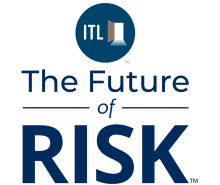The cost of identity fraud for financial institutions and businesses is rising at an alarming rate. According to NASDAQ, global fraud reached nearly $500 billion in 2023. In 2024, 40% of financial institutions saw an increase in fraud-related losses compared with the previous year.
Behind these staggering numbers is a fast-evolving threat landscape. Fraudsters are leveraging next-gen technology like generative AI to create more convincing phishing scams, synthetic identities and even deep fakes.
While businesses are investing in stronger fraud detection tools, they can't catch every threat. To stay ahead, it's time for companies to adapt. Enter identity fraud loss insurance, an emerging layer of protection designed to help banks manage the "when" of fraud loss.
The Limitations of Current Fraud Risk Strategies
Recent innovation means fraud risk management strategies have come a long way in recent years. Businesses now have access to multi-factor authentication, identity verification, anomaly detection and other solutions to build a robust risk monitoring program.
But fraud still slips through.
When fraud happens, the consequences extend beyond reputational harm—they hit the bottom line. Though technology can improve monitoring and prediction strategies, none of the previously mentioned solutions transfers the risk of fraud off a business's balance sheet. That's where identity fraud loss insurance comes in, offering a critical layer of protection that transfers financial risk away from businesses and toward the insurers.
What Is Identity Fraud Loss Insurance?
Identity fraud loss insurance is new to the market but is gaining traction quickly. Integrating AI-powered fraud risk detection with insurance-backed protection shifts financial liability for identity fraud away from businesses, freeing their risk capital reserves. This means organizations can protect their bottom line while preserving risk capital for strategic initiatives.
The benefit? It safeguards revenue without adding operational friction. Businesses can confidently scale customer acquisition efforts without proportionally increasing their exposure to fraud loss risk.
An Untapped Opportunity for Brokers
In 2023, account takeover fraud surged to nearly $13 billion in losses, up from $11 billion the previous year. New-account fraud reached $5.3 billion, rising from $3.9 billion in 2022. Meanwhile, a 2023 report from Thomson Reuters estimated the financial losses due to synthetic identity fraud to be between $20 million and $40 million annually.
These growing threats highlight a critical need: Businesses and financial institutions require more than temporary fixes—they need a strategic, long-term solution that allows them to scale.
In a saturated risk management market, identity fraud insurance gives brokers a true differentiator. It fills a crucial gap in traditional fraud mitigation strategies by directly transferring financial liability off the balance sheet.
It also opens the door to more value-driven conversations with existing clients, especially for high-risk businesses like banks, credit unions, payments providers and lenders.
Implementing for Success
Identity fraud loss insurance can unlock significant value. However, to maximize its benefits, brokers should guide their clients through a thoughtful evaluation process before implementation. Key steps include:
- Understand current fraud exposure: Ensure the client has a firm grasp on their existing fraud risk and loss, as well as potential vulnerabilities.
- Evaluate policy details: Carefully assess policy coverage, exclusions, claims processes and alignment with existing compliance and fraud prevention frameworks to ensure they're partnering with the right provider.
- Verify data capture capabilities: Check that the solution's transaction audit features automatically gather the data required to file fraud loss claims and reduce claim adjustments.
- Prioritize fast, reliable claims processing: Look for a solution with electronic claims processing capabilities of the fraud loss insurance provider and 30-day or less claims payment guarantees.
These steps ensure that the policy delivers real value and that clients are fully prepared to act when fraud strikes.
Identity fraud is an unavoidable in today's digital landscape, but businesses no longer have to bear the financial burden. Identity fraud loss insurance offers a strategic layer of protection that empowers businesses to grow confidently and onboard more customers without expanding their fraud risk exposure.
As this new-to-market solution gains traction, brokers have a unique opportunity to be at the forefront of change – helping clients stay ahead of emerging threats while delivering measurable value and building deeper trust.






